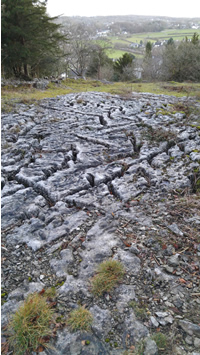
Silverdale in Lancashire, where I’m spending Christmas, sits on limestone. Whenever you dig into the ground round here you soon hit limestone, and in places where you can see it above ground, it forms what are known as ‘limestone pavements’ (see photo) in the UK. The blocks of stone within the pavements are known as clints and the fissures between them, which are eroded by water, are known as grikes or grykes.
The word grike/gryke comes from the Middle English crike, from the Old Norse kriki (crack, bend, concavity), which is also the root of the word creek.
The word clint comes from Middle English, perhaps from the Middle Low German klint (cliff, crag).
In other places a landscape based on a limestone plain with thin or no soil and sparse vegetation is known as an alvar, which comes from a Swedish word, ålvar (bare limestone soil).
Sources: Wikipedia, Arnside and Silverdale Area of Outstanding Natural Beauty, Merriam-Webster Dictionary, bab.la dictionary
In Latvian, klints means ‘cliff’. According to https://en.wiktionary.org/wiki/klints , it is a relatively recent loan, having come from Baltic German dialects in C18th.